SERP analysis is a powerful tool. By mastering it, you can transform your website’s performance and dominate your niche. In this comprehensive guide, we’ll delve deep into what SERP analysis is, its benefits, steps to conduct one effectively, and even explore the best tools for the job.
Let’s dive in and unlock the secrets behind mastering SERP analysis.
What is Search Engine Results Page Analysis?
SERP (Search Engine Results Page) analysis is the process of evaluating and dissecting elements of individual search results pages returned by search engines like Google. It aims to understand why search engines rank certain webpages higher than others for specific keyword searches with a focus on understanding key factors such as search intent, competitor analysis, and content optimization strategies, among other vital data points.
By conducting a thorough SERP analysis, you gain insights into how well your website is performing compared to competitors and pinpoint areas where improvements can be made. Essentially, a robust SERP analysis enables you to:
- Analyze keyword competition
- Identify user search intent
- Assess market gaps or opportunities
- Determine organic ranking factors affecting rankings
- Evaluate competitor strategies
Benefits of Conducting a SERP Analysis
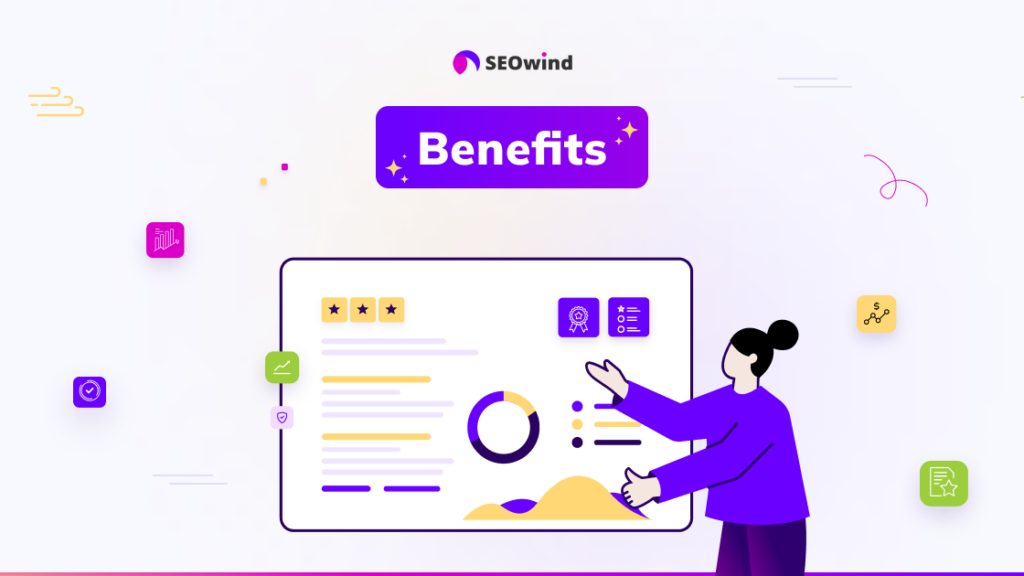
Conducting a detailed SERP analysis offers numerous advantages to website owners and digital marketers aiming to dominate their niche. By understanding the search engine results pages (SERPs) better, you can devise an effective marketing strategy that targets the right opportunities.
Here are some major benefits of performing a thorough SERP analysis:
Gain Valuable Insight into Your Competitors’ Activities
Analyzing SERPs provides you with essential details about your competitors, such as their content strategies, link-building techniques, and targeted keywords. As you check SERP competition, this information helps you uncover gaps in your own approach and allows you to refine your tactics accordingly.
Determine User Intent Behind Keywords
A comprehensive SERP analysis helps identify the dominant searcher intents for your selected keywords. This improves your ability to create content that addresses these needs while also optimizing it for higher rankings in search engines.
Identify High-Value Ranking Opportunities
By studying the SERPs closely, including both organic and paid listings, you can unveil high-value ranking opportunities in terms of keyword difficulty or potential traffic gains. These findings can guide your SEO priorities more effectively by focusing on impactful changes leading to enhanced visibility and value proposition.
Improve Conversions & ROI
Through using SERP checker tools like Moz Pro and Ahrefs Keyword Explorer, SERPs offer useful clues about users’ specific expectations behind each query. Recognizing these underlying factors greatly increases your chances of delivering relevant content that matches user intent—resulting in higher click-through rates (CTRs), conversions, engagement levels—and ultimately—a superior return on investment (ROI).
Conducting a meticulous SERP analysis enables you to achieve meaningful insights into market trends and competitive activities—as well as sharpen both short-term and long-term strategic goals—to attain a formidable edge within your domain’s most valuable areas.
Steps to Perform SERP Analysis
Breaking down the process of SERP analysis can make it more manageable and effective. We will cover five essential steps to conduct a thorough SERP analysis.
Keyword Research
The foundation of any successful SERP analysis lies in effective keyword research. By conducting comprehensive research on relevant keywords for your niche, you increase the chances of positioning your website higher on search results pages. To begin analyzing keywords:
- Brainstorm a list of core topics related to your business or industry.
- Use a keyword research tool like Google’s Keyword Planner or other SERP checker tools to find relevant long-tail keywords based on those core topics.
- Evaluate the competitiveness of each keyword by checking factors such as search volume, cost-per-click (CPC), and keyword difficulty.
As you complete these tasks, make sure to analyze keywords that are both primary (focus) and secondary (complementary) so that you have a diverse range of terms to target.
Note: If you would like to find out more about keyword research tools read: Discover the Best Keyword Research Tools of 2023
Identifying Search Intent
Understanding what users intend when they type certain queries into search engines is crucial for creating relevant content to rank high on SERPs. As part of your SERP analysis, determine the search intent behind the keywords you’ve gathered through research. There are four main categories of search intent:
- Informational: Users are looking for information about specific topics.
- Navigational: Users want to visit a particular website or online destination directly.
- Transactional: Users intend to purchase a product or service online.
- Commercial investigation: Users compare different products or services before making decisions.
By focusing on user intent when analyzing SERPs and crafting content accordingly, you’ll be able to provide valuable resources that meet their needs.
Competitive Analysis
Conducting a competitive analysis helps gauge how well your competitors rank against the selected keywords and offers insight into their strategies. To check SERP competition, follow these steps:
- Identify your top competitors by searching for the target keywords.
- Examine their website structure, user experience (UX), backlinks, and content quality to uncover strengths and weaknesses.
- Use tools like Ahrefs, Moz Pro SERP Analysis Tool, or SEMrush Position Tracking Tool to analyze competitor performance metrics.
Incorporate what you’ve learned from your competitive analysis to shape your optimization efforts.
Finding Ranking Opportunities
By analyzing SERPs for potential gaps in keyword rankings, you can identify opportunities that may increase your visibility in the organic search results. These opportunities often present themselves as low-competition or long-tail keywords that are not being adequately targeted by industry competitors. Focus on leveraging these untapped sources of traffic by:
- Using less competitive keywords with decent search volume
- Creating high-quality content around those terms
- Building a solid internal linking structure to support them
Discovering ranking opportunities will give your site an edge over the competition and enable it to climb higher on SERPs.
Optimizing Content
After delving into keyword research, search intent identification, competitive analysis, and unearthing ranking opportunities comes content optimization—the critical final stage in SERP analysis efforts:
- Cut out any irrelevant information or outdated material from existing content.
- Make sure primary and secondary keywords are strategically used throughout headings (H1-H6), title tags, meta descriptions, alt tags for images, URL slugs, etc., ensuring they appear natural within the
Best SERP Tools to Help Get on Page One
A thorough SERP analysis is essential for successfully dominating your niche. To conduct effective research, you need reliable and powerful tools at your disposal. In this section, I’ll introduce five of the best SERP tools that will help you achieve higher rankings and improve your search visibility.
SEOwind
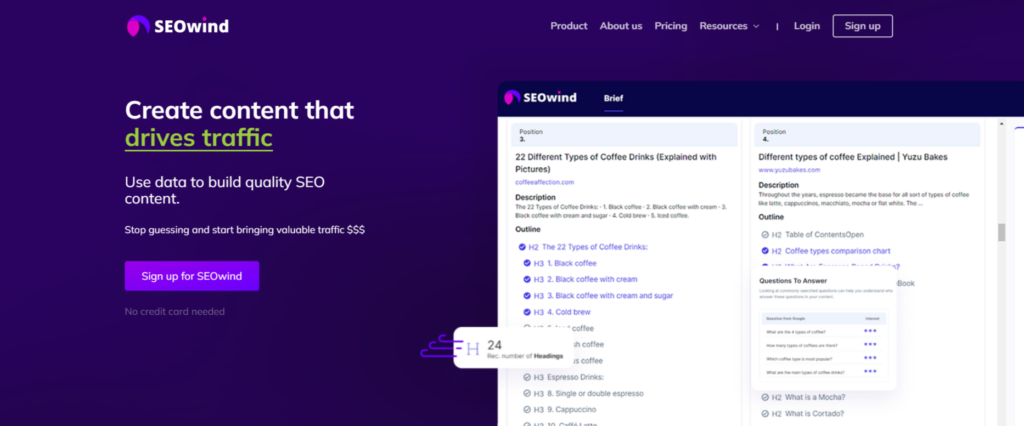
SEOwind is not a typical SERP tool. However, if you are creating content briefs it will provide you with indispensable data on top-ranking pages. It collects data on:
- top performing websites, their title tags and descriptions,
- keywords the page ranks in the top 30,
- content outlines to let you quickly come up with your headings and subheadings
- bonus: it provides you with questions related to the primary keyword.
SEOwind is very action-oriented. It collects and lets you use all the competitive data to craft the article that will rank. With its AI additional features, it lets you streamline the content creation process.
Moz Pro SERP Analysis Tool
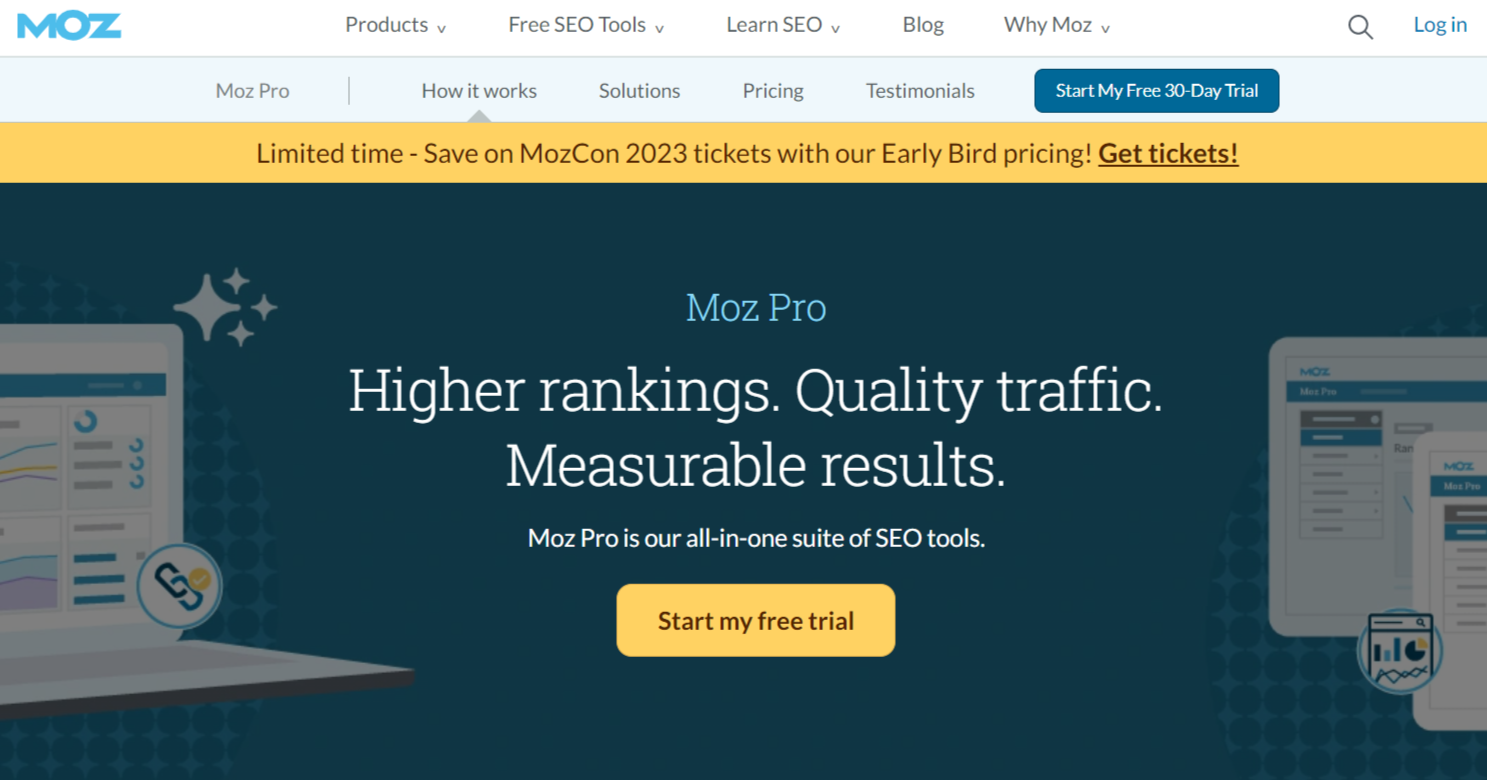
Moz Pro is designed to streamline the process of analyzing organic search visibility. With features such as keyword tracking, domain authority assessment, and backlink analytics, this all-in-one platform ensures that you have a comprehensive understanding of your website’s performance in search engine results.
Some key features of Moz Pro’s SERP Analysis Tool include:
- Keyword optimization score: Assess how well your web pages are optimized for targeted keywords
- Competitive analysis: Compare your site against major competitors for specific keywords
- Link profile analysis: Examine inbound links pointing to your site to identify any potential issues or opportunities
With these features in mind, it’s clear why Moz Pro has earned its place among top-tier serp checker tools.
SEMrush Position Tracking Tool
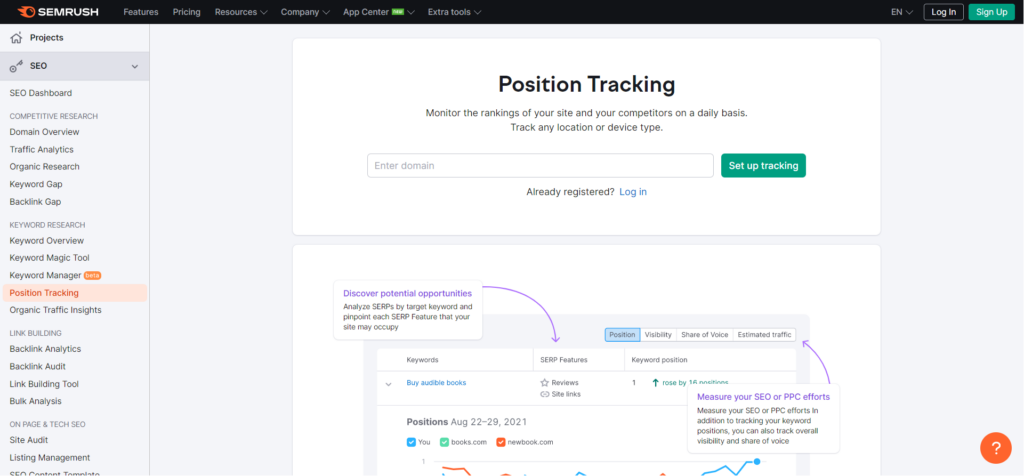
SEMrush Position Tracking is another heavyweight when it comes to SEO solutions. Their position tracking tool offers extensive insights into Google and Bing rankings across numerous geographic locations, enabling you to check SERP competition effectively.
Features provided by SEMrush include:
- Daily updates: Gain up-to-date data on keyword positions across both desktop and mobile devices
- Competitor discovery: Uncover new rivals who may be affecting your organic traffic
- Device and location-based targeting: Analyze keyword performance tailored by device type or specific location
Given its wide range of capabilities, SEMrush has become a go-to resource for marketers looking for insights into their site’s search engine presence.
SE Ranking SERP Checker
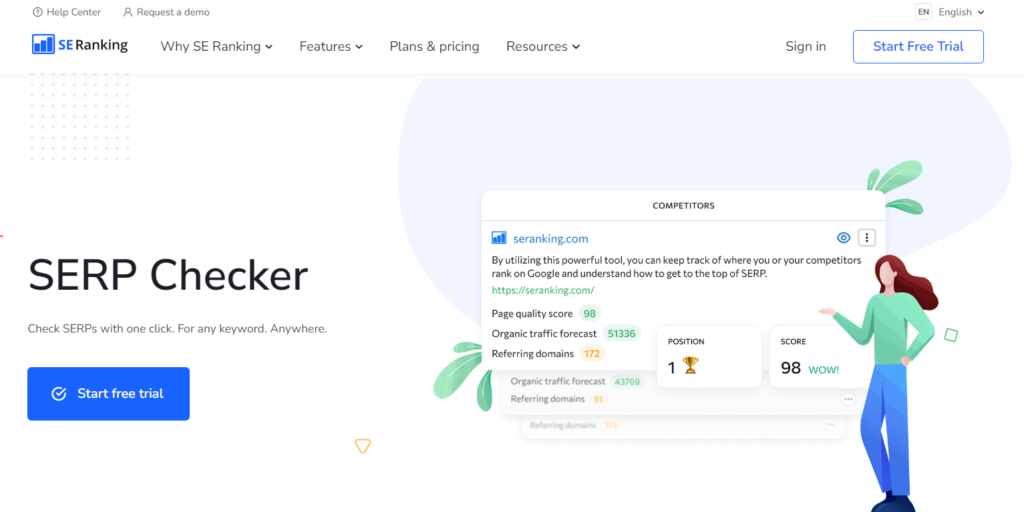
SE Ranking offers a robust SERP analyzer that caters to both beginners and experienced marketers. With an intuitive interface, this SERP analysis tool provides a wealth of useful information.
Key aspects of SE Ranking’s tool include:
- Tracking search engine rankings: Monitor your site’s performance for keywords across different search engines
- In-depth reporting: Generate detailed reports to measure your website’s progress over time
- Comprehensive competitor analysis: Understand how your competition is faring in terms of ranking and backlink strategies
These functionalities make SE Ranking perfect for businesses looking for a user-friendly, yet comprehensive SERP checker tool.
Ubersuggest
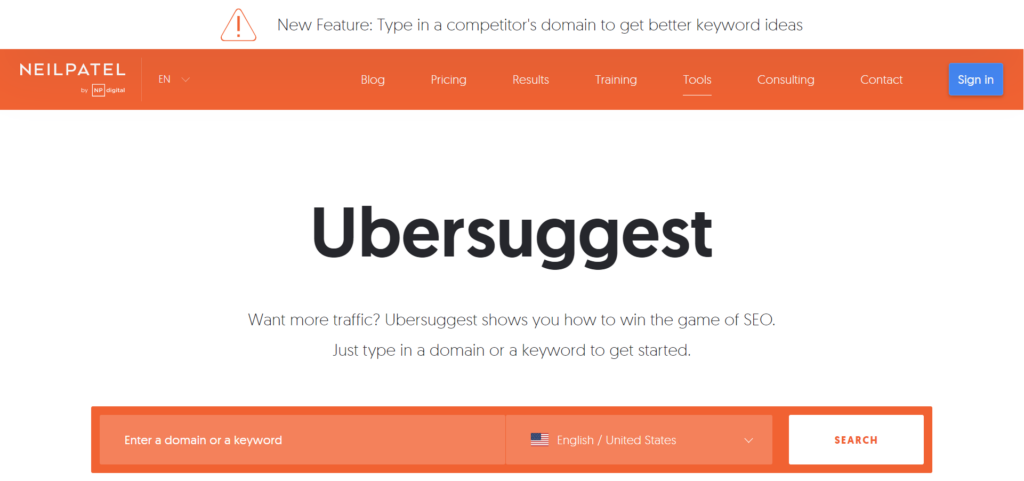
Ubersuggest is a powerful SEO platform developed by renowned marketing expert Neil Patel. This robust SERP analysis tool offers valuable insights into keyword metrics, domain scores, link profiles, and more.
Some notable features Ubersuggest provides are:
- Keyword research and suggestions: Find long-tail keywords with low difficulty scores to rank higher on Google
- Backlink data analysis: Get insights into the kind of websites linking back to your content
- Top-rated pages report: Discover which pages are driving the most organic traffic and identify areas of improvement
Ubersuggest’s simple yet effective approach makes it an attractive solution for those looking to analyze SERPs without breaking the bank.
Ahrefs Keyword Explorer
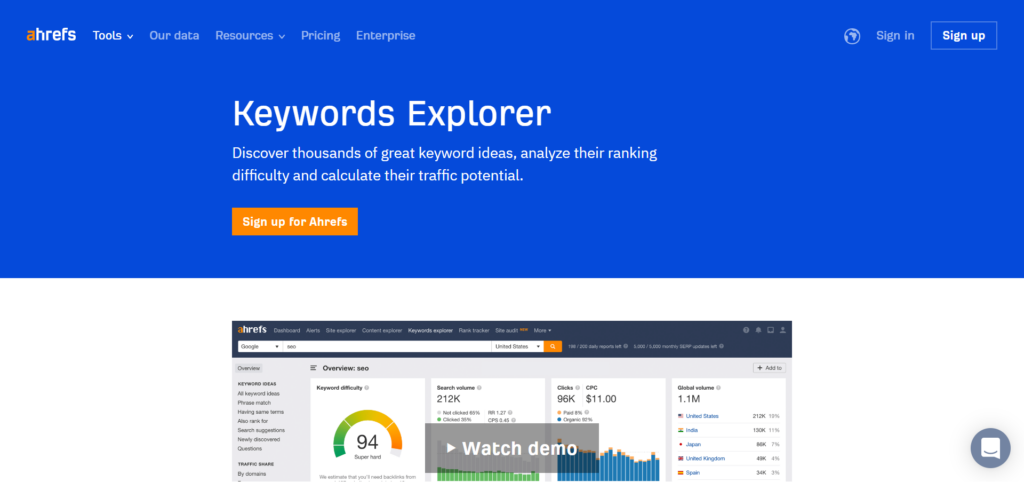
Ahrefs is widely recognized as one of the best SEO tools available today. Their keyword explorer feature takes SERP analysis to new heights with unparalleled depth and precision.
Highlights of Ahrefs’ Keyword Explorer include:
- Keyword difficulty estimation: Gauge the level of competition for specific keywords before deciding whether or not to target them.
- Keyword search volume: Get accurate data on how often people search for a particular keyword
- Click-through rate prediction: Ahrefs’ proprietary algorithm predicts the average click-through rate (CTR) for each keyword
- Keyword suggestions: Discover new, related searches that you might not have thought of, allowing you to expand your content strategy and reach a broader audience.
- SERP features and analysis: Get insights into the search engine results pages (SERPs) for your target keywords, including the presence of rich snippets, local packs, and featured snippets.
- Search intent and relevance: Understand the intent behind users’ search queries
- Historical keyword data: Analyze changes in keyword search volume, competition, and SERP features over time.
Featured Snippets and Knowledge Panels
In the context of SERP analysis, it’s essential to understand the importance of featured snippets and knowledge panels. These elements play a pivotal role in increasing website visibility and enhancing the user experience on search engine results pages. I will now discuss what these features are, their benefits, and ways to optimize your content for them.
What Are Featured Snippets?
Featured snippets are selected Google search results that appear on top of organic listings in a special box called “snippet.” They provide concise answers to users’ queries directly on the results page, without requiring them to click through to a specific webpage. By focusing on user intent, Google aims to provide relevant information as efficiently as possible.
This is an example of a featured snippet for the search “SERP analysis”
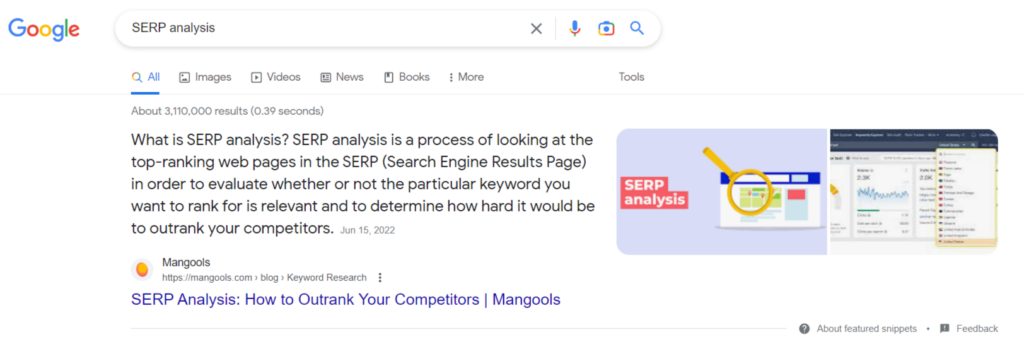
There are various types of featured snippets, including:
- Paragraph snippets
- List snippets (ordered or unordered)
- Table snippets
- Video snippets
What Are Knowledge Panels?
Knowledge panels are informative boxes that appear in search results when people inquire about well-defined entities such as famous personalities, popular events, prominent landmarks, etc. They contain key facts or details about the subject matter and often include images, external links to social accounts or websites, and other related resources. Primarily powered by Google’s Knowledge Graph technology, they help establish credibility for brands and give additional exposure.
Benefits of Optimizing Content for Featured Snippets and Knowledge Panel
Optimizing your website’s content for featured snippets and knowledge panels can lead to several advantages:
- Enhanced visibility: Being included in either format grants higher prominence within SERPs because they stand out from standard organic listings.
- Increased traffic: Users find value in these quick answers; therefore they’re more likely to engage with your site if your content is featured.
- Competitive edge: An optimized snippet or panel has better chances of gaining clicks over sites ranked below it even if they have higher overall rankings.
- Credibility boost: Both formats present you as an industry leader and reliable source of information.
How to Optimize Content for Featured Snippets & Knowledge Panels
Here are a few strategies to improve your chances of appearing in featured snippets and knowledge panels:
- Research commonly asked questions related to your niche or targeted keywords, using tools like Answer the Public or Google’s “People also ask” section.
- Create high-quality content with concise, accurate answers to those questions. Structure it in easily digestible formats such as lists or tables.
- Implement Schema markup on relevant website sections; this aids search engines in better understanding the context behind the provided data.
- Keep up-to-date with authoritative sources within your industry that may contain current events or pertinent issues users might inquire about.
By incorporating these techniques into your content strategy, you can effectively conduct/improve SERP analysis through featured snippets and knowledge panels while boosting your overall online presence.
Video Carousels, Maps, and Image Packs
As part of your SERP analysis journey, it is crucial to understand the various types of search features that can appear in the search results. These include video carousels, maps, and image packs which provide additional information and engaging visuals to users. By understanding these different features, you can further optimize your content to potentially rank higher in search engine results pages (SERPs).
Video Carousels
Video carousels are a popular feature within Google SERPs that display a horizontally scrollable list of videos related to the user’s query. To capitalize on this feature:
- Create high-quality and informative videos tailored to your target audience
- Optimize video titles, descriptions, and tags with relevant keywords
- Add transcripts and captions for improved accessibility and SEO value
- Embed these videos into relevant blog posts or articles on your website
Maps
Local SEO is essential for businesses targeting customers within specific geographic areas. Utilizing the local intent SERP features such as map packs can significantly boost visibility in search results. Consider adopting these strategies:
- Ensure your business has an accurate address listed on Google My Business (GMB)
- Optimize GMB listings with appropriate categories, detailed descriptions, images, reviews, and localized keywords
- Build citations across authoritative directories (such as Yelp) featuring consistent Name-Address-Phone number (NAP) data.
Image Packs
When appropriate for specific queries or industries – like those within fashion or food – image packs offer visually striking insights that may entice visitors to engage with a piece of content. Try incorporating these tactics when striving for visibility within image pack features:
- Include high-quality images throughout each page of your website
- Customize filenames using target keywords while avoiding keyword-stuffing practices
- Employ descriptive ALT text attributes incorporating relevant phrases related specifically to the corresponding imagery
By acknowledging the presence of video carousels, maps, and image packs during your SERP analysis, you stand to better comprehend the landscape you’re competing in. Recognizing what resonates most with your target audience will allow for informed decisions when developing future content strategies, ultimately helping dominate your niche while continuously elevating your online presence.
Local Intent SERP Features
When analyzing SERPs, it’s essential to understand the significance of local intent search features. These are specific elements that Google includes on SERPs pages to provide more relevant and accurate results for users searching for products or services in a particular area. Recognizing these features can help your business target local traffic and dominate your niche on a regional level.
What Are Local Intent Search Features?
Local intent search features are designed to cater to queries with geographic implications, typically appearing for searches such as “[product/service] near me” or “[business type] in [location].” Examples of these features include:
- Google My Business listings
- Local 3-Pack (a section showing the top three local businesses)
- Maps Integration
- Reviews and star ratings displayed alongside the business information
By examining these elements in your SERP analysis, you can assess your competition on a local scale and refine your SEO strategy accordingly.
The Importance of Google My Business Listings
A critical aspect of local intent search optimization is managing your Google My Business profile effectively. It allows you to put pertinent information about your company in front of potential customers directly within the SERP. To enhance visibility in SERPs with local intent signals, ensure that you:
- Keep all business details updated
- Gather and respond to customer reviews
- Share images and posts consistently to demonstrate engagement
Achieving a robust Google My Business presence correlates strongly with ranking higher in local-oriented SERPs.
Leveraging the Local 3-Pack
The Local Google 3-Pack showcases three businesses closely related to a user’s query, giving them an optimal shot at acquiring new customers browsing for nearby service providers. Making it into this coveted group entails optimizing factors like proximity, relevance, and prominence—features that stem from having a well-maintained Google My Business listing.
Getting featured requires ongoing effort; however, understanding how the Local 3-Pack operates and continually optimizing your business’s online presence can lead to significant benefits in terms of traffic, leads, and customers.
The Role of Reviews
A crucial component of local intent SERP features is customer reviews. Positive feedback not only enhances credibility but also influences how prominently Google displays your listing. Encourage satisfied clients to leave reviews on your Google My Business profile, and always take time to respond—be it for thank yous or addressing specific concerns.
In conclusion, mastering local intent SERP features allows businesses to optimize their strategies and outperform competitors intending to capture the same regional market share. By conducting a thorough SERP analysis and considering these hyper-focused elements, you’ll be well-equipped to maximize visibility among an audience that’s searching near your location—a valuable step towards dominating your niche at a local level.
Multiple User Intents
In the realm of SEO and SERP analysis, it’s crucial to acknowledge and address multiple user intents. Different users access search engines with varying objectives; therefore, understanding these various intentions can contribute significantly to optimizing your website. In this section, we will discuss how to identify and capitalize on multiple user intents effectively.
How to Identify Multiple User Intents
When examining a particular keyword or query, consider the diverse reasons that may prompt a user to type it into the search engine. To analyze these potential motivations, follow some of these approaches:
- Study top-ranking web pages: By investigating the content of high-performing websites addressing your keyword(s), you can deduce prevalent user intents associated with these terms.
- Read industry forums and social media discussions: Gleaning insights from conversations surrounding relevant topics within your industry can help uncover unique perspectives and interests.
- Utilize specialized tools: Many SERP analysis tools offer intent-based keyword segmentation that classifies keywords according to their main purpose (e.g., informational, transactional, navigational).
Addressing Diverse User Intentions
After ascertaining the primary user intents connected to your targeted keywords or queries, incorporate strategies aimed at meeting those needs in your optimization plan:
- Create diverse content types: Address different user intents by crafting an assortment of informative articles, tutorials, reviews, comparisons, case studies or list posts.
- Present clear calls-to-action (CTAs): Guide users further down the conversion funnel by providing CTAs tailored for each identified intent (e.g., “Learn More,” “Buy Now,” “Get Started”).
- Optimize landing pages for specific segments: Customize pages according to various demographics or buyer personas in order to enhance engagement rates among visitors with distinct goals.
Integrating such techniques within your SEO efforts not only results in higher customer satisfaction but also solidifies your footing within SERPs while catering to a wider audience range.
Wrap-Up: All Roads Lead to SERP Analysis
To dominate your niche in today’s competitive digital landscape, understanding and mastering SERP analysis is essential. Conducting a thorough SERP analysis empowers you with valuable insights into the search landscape, allowing you to optimize your content for better rankings and higher visibility on SERP.
Let’s recap some key points covered throughout the article:
- What is SERP analysis? It involves examining the top-ranking results returned by search engines for particular keywords or queries to gain an understanding of what they have in common, what makes them rank well, and how to improve your own content strategy.
- Benefits of conducting a SERP analysis: Gaining insights on ranking factors, determining searcher’s intent, identifying gaps in competitors’ strategies, maximizing organic traffic and visibility are just some of the numerous advantages that come with analyzing your niche’s SERPs.
- Steps to conduct a SERP analysis: Begin with keyword research, followed by identifying search intent, competitive analysis, finding ranking opportunities, and optimizing your content accordingly.
- SERP rating calculation: Learn how different SEO platforms calculate their rating; understanding these metrics will enable you to refine your SEO approach.
- Best SERP tools available: Invest time in learning tools like Moz Pro SERP Analysis Tool, SEMrush Position Tracking Tool, SE Ranking SERP Analysis Tool, Ubersuggest, and Ahrefs Keyword Explorer to aid you in the process of monitoring and improving your rankings.
- Leveraging featured snippets and knowledge panels: To increase your chances of gaining additional exposure through these coveted positions on Google’s first page.
- Catering to video carousels, maps, and image packs: Incorporate multimedia formats within your content creation as this could diversify the way users reach important information.
By using these guidelines along with choosing appropriate keywords like “serps keyword ranking,” “google serp analysis,” and “serp analyzer”, you can hone in on an effective SEO strategy. Regularly update your content, conduct SERP competition checks, and analyze keywords to ensure your business stays ahead of the intensive digital competition.
Remember that SERP analysis is not a one-time exercise but should be treated as an ongoing effort for continuous improvement. As search algorithms evolve and user behavior changes, keeping up with these fluctuating dynamics will become increasingly vital to maintain a strong online presence idyllically crafted around satisfying multiple user intents. Embracing these challenges will ultimately help you dominate your niche and reap maximum benefits from SERP analysis!



